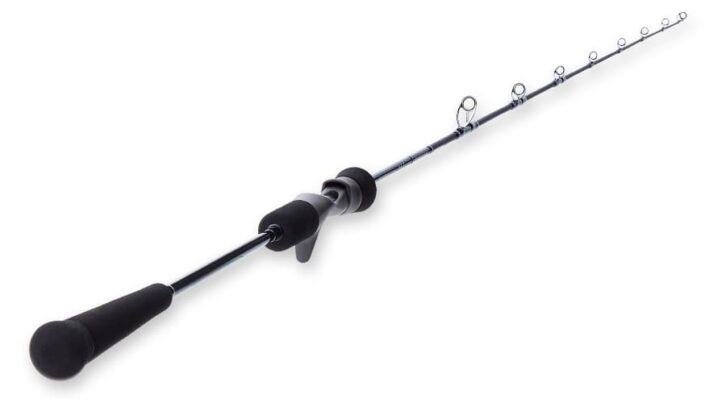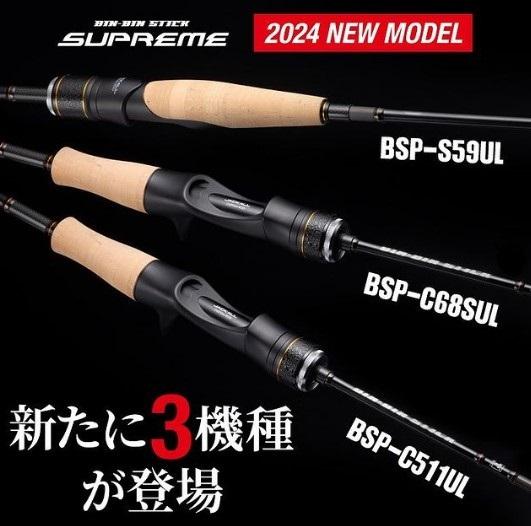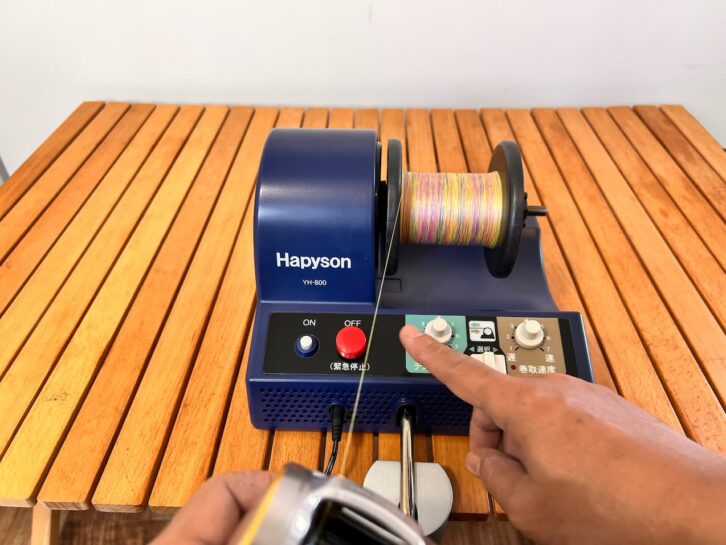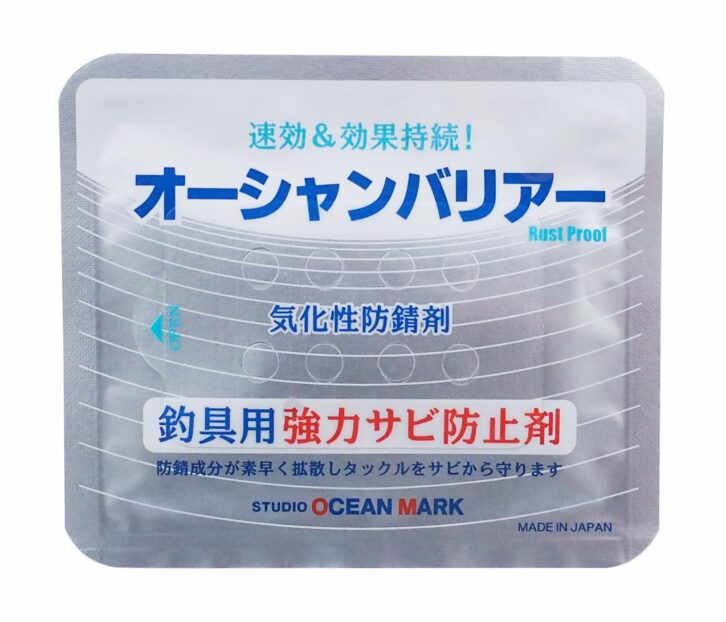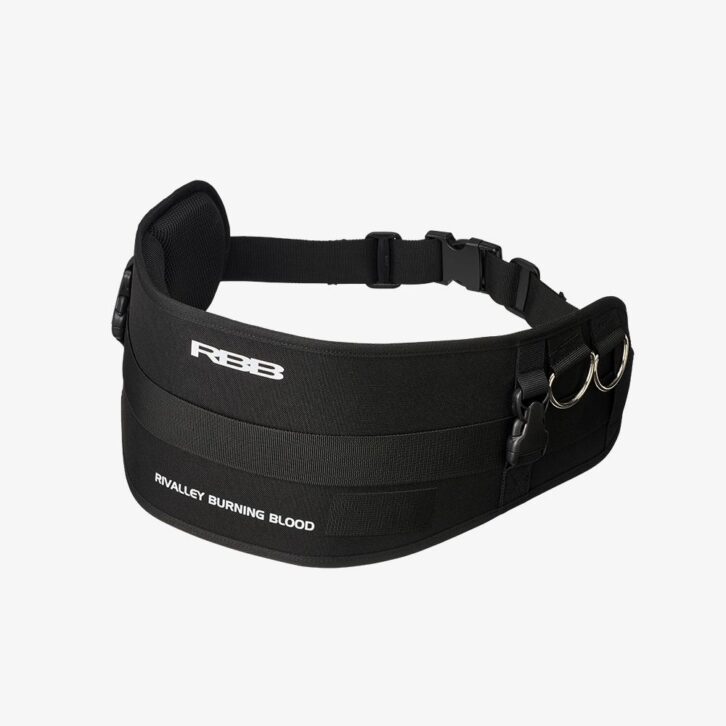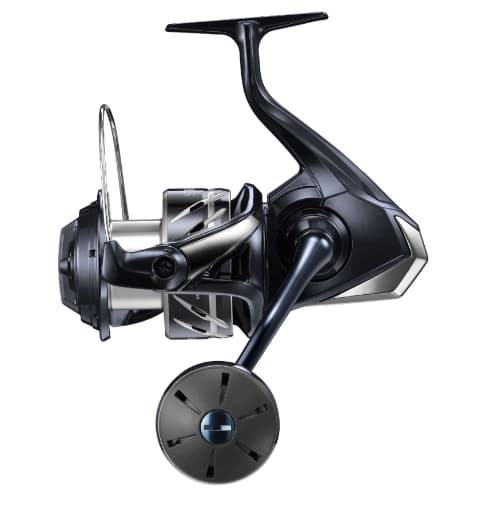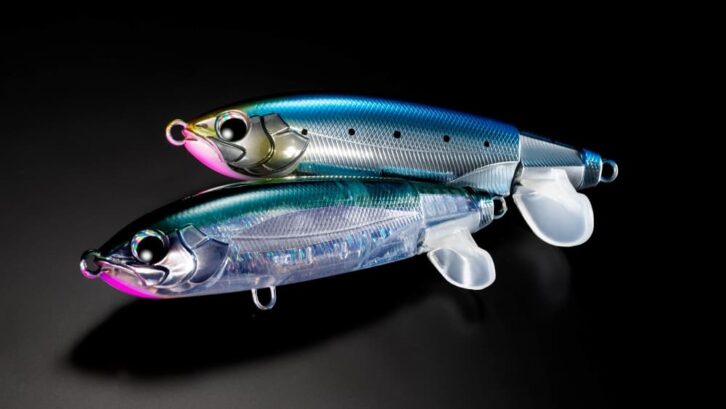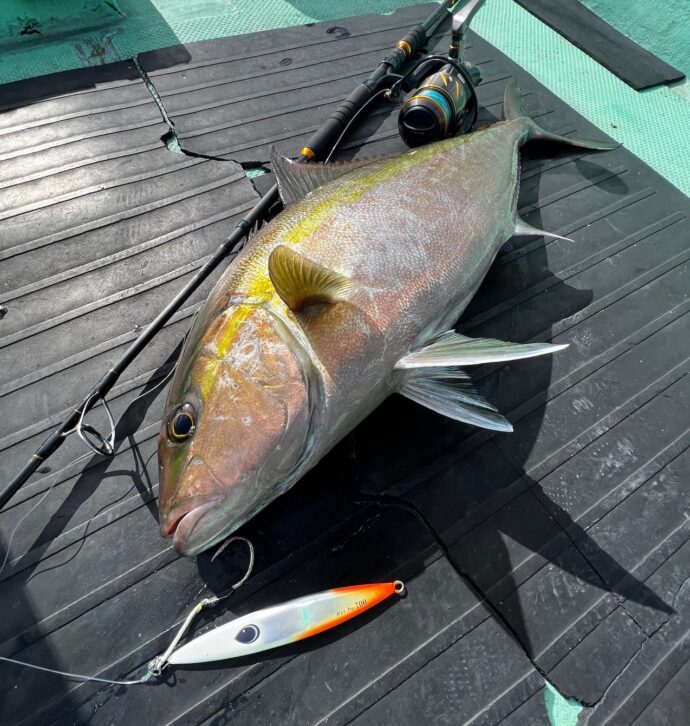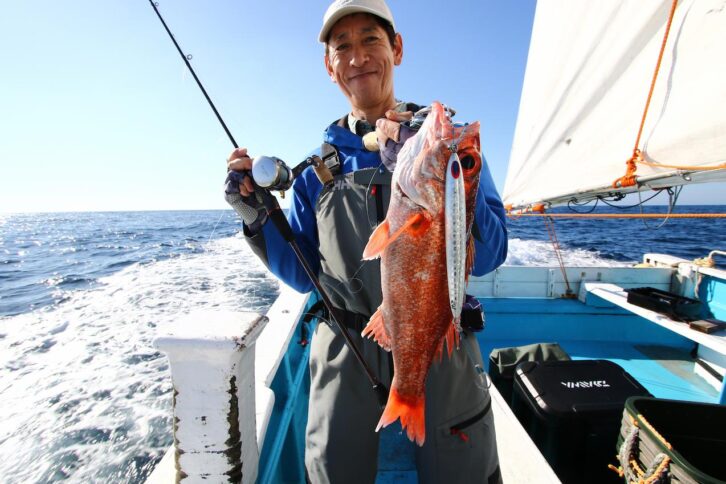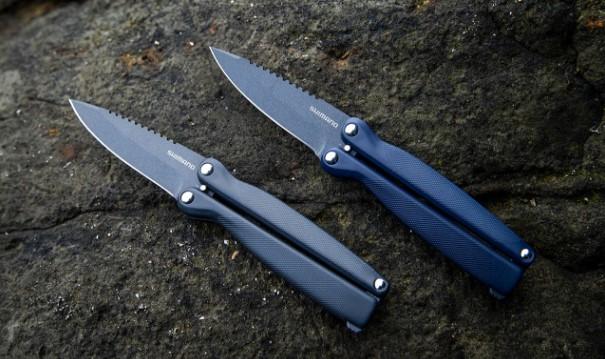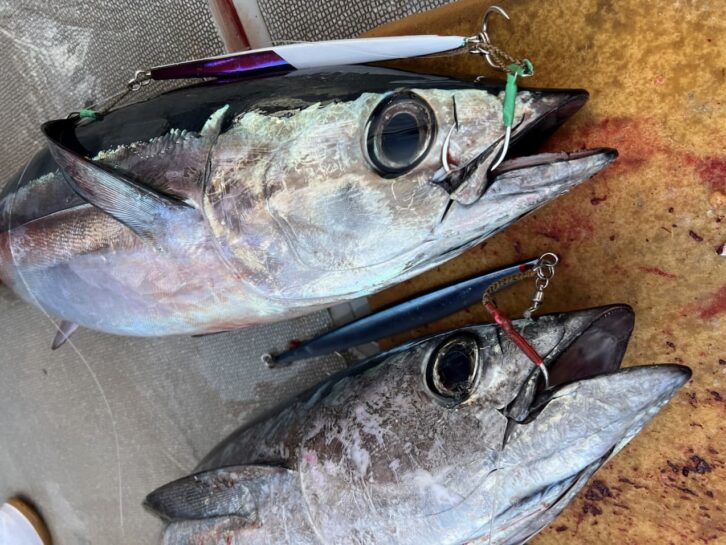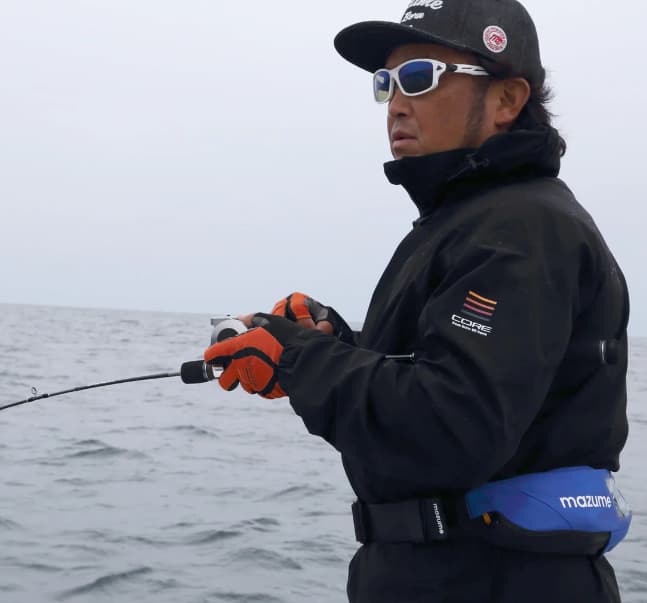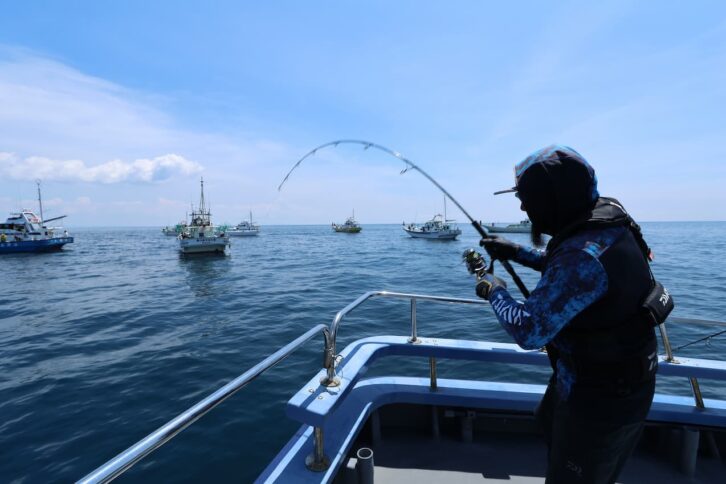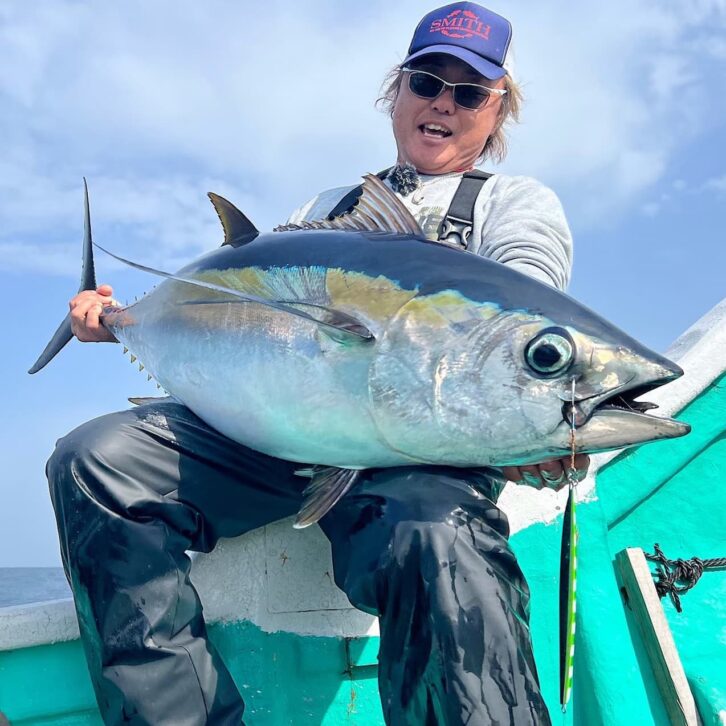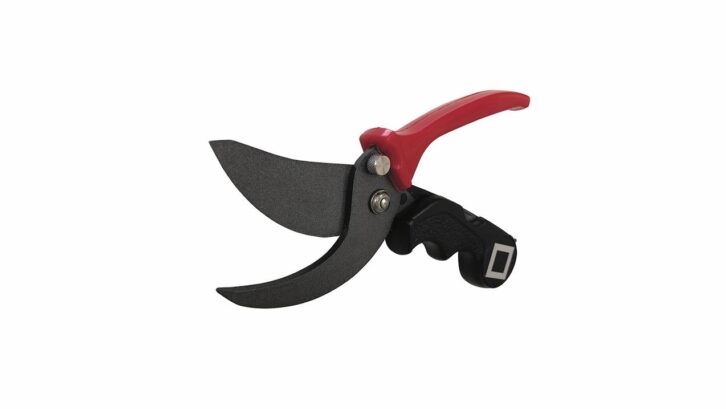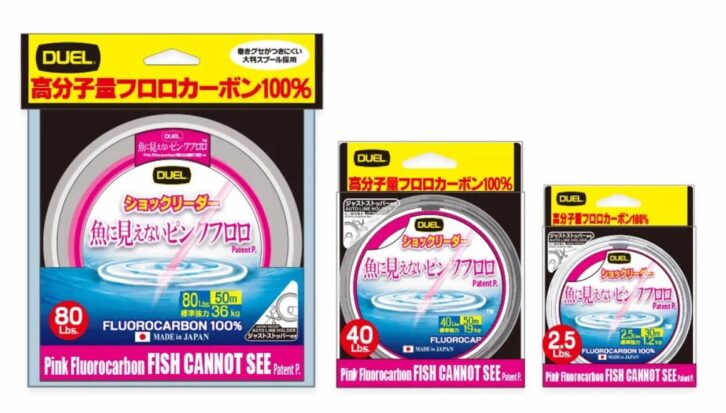Actual fishing with Spanish Mackerel in Tokyo Bay!
Shout! Makoto Ono explains! Blade Jigging Tackle Edition
In early October, Makoto Ono of Shout! who has been spreading the joy of blade jigging around the world, fished in Tokyo Bay in early October. It was early in the season and still a difficult time to catch fish, but he was successful. In this article, we would like to explain the tackle used for the fishing.

INDEX
Rods are selected according to fishing position and jig weight
As written in the article of the actual fishing section, this time we were taken care of by Fukagawa Yoshinoya, which sails from the inner bay of Tokyo Bay. In Tokyo Bay, there are two types of Spanish mackerel game: large passenger boats like Fukagawa Yoshinoya’s and small boats. Blade jigging is a method of casting and reeling in a jig, and on large boats the jig is basically under-cast. On the other hand, small boats with a small number of anglers can cast the jig overboard, but this is usually done on a charter boat, not a passenger boat, and it is necessary to have a group of anglers on board. Although there are casting restrictions with a shared boat, the attraction is that it can be easily enjoyed by a small group or just one person.
Many people use lightweight dolphin rods or sea bass rods for blade jigging, but rods specially developed for this purpose are the best. It should be sensitive and easy to cast, of course, but it should also be flexible so that it can handle the movement of a Spanish mackerel after it hits and keep the bounce from coming off its soft mouth. Such is the reason for the shout! BLJ Gunner is the SBG713S model, a 7’1″ model suitable for long casts with a light blade jig weighing 30 to 50g. It is suitable for long casts of 30-50g light blade jigs. The BLJ Booster, on the other hand, is modeled as SBB663S and measures 6 feet 6 inches. It can be used with a wide range of blade jigs from 40 to 100g, and the grip end can be clipped at the side, making it easy to perform stable, high-speed reeling.
When fishing on a large passenger boat in shallow water with a standing waterline as in this case, the BLJ Gunner is a model that can be easily used for longer casting distances and can be used for fishing over a wider area. Its length also allows the angler to attack nabura that appear unexpectedly. Its length also makes it easier to deal with Spanish mackerel that run near the surface toward the bottom of the boat. The BLJ booster is also shorter than the gunner, making it easier to cast when the distance to the surface is close, such as between the bodies of a boat. The shorter length also makes it easier to handle. The wide range of weights available also makes it useful in areas where anglers are exploring deep water.
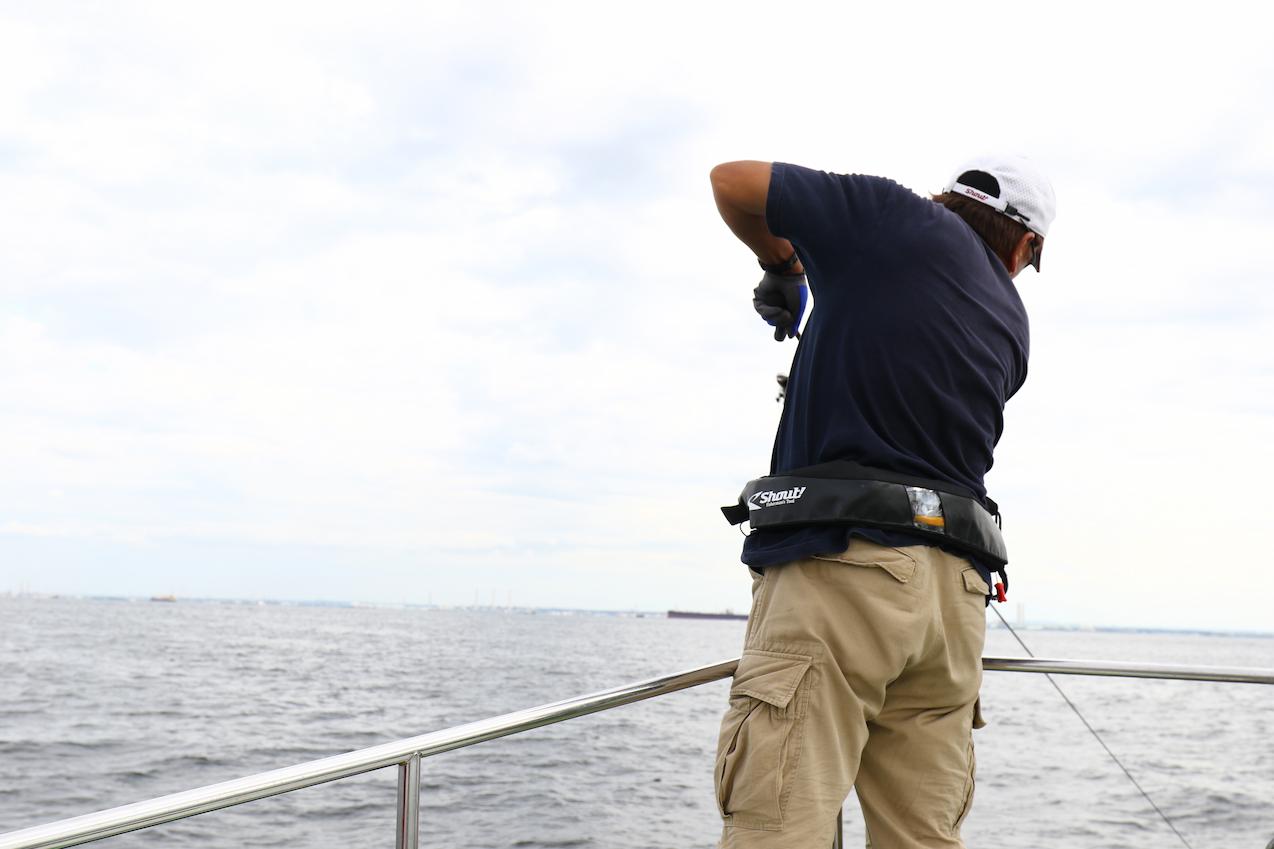
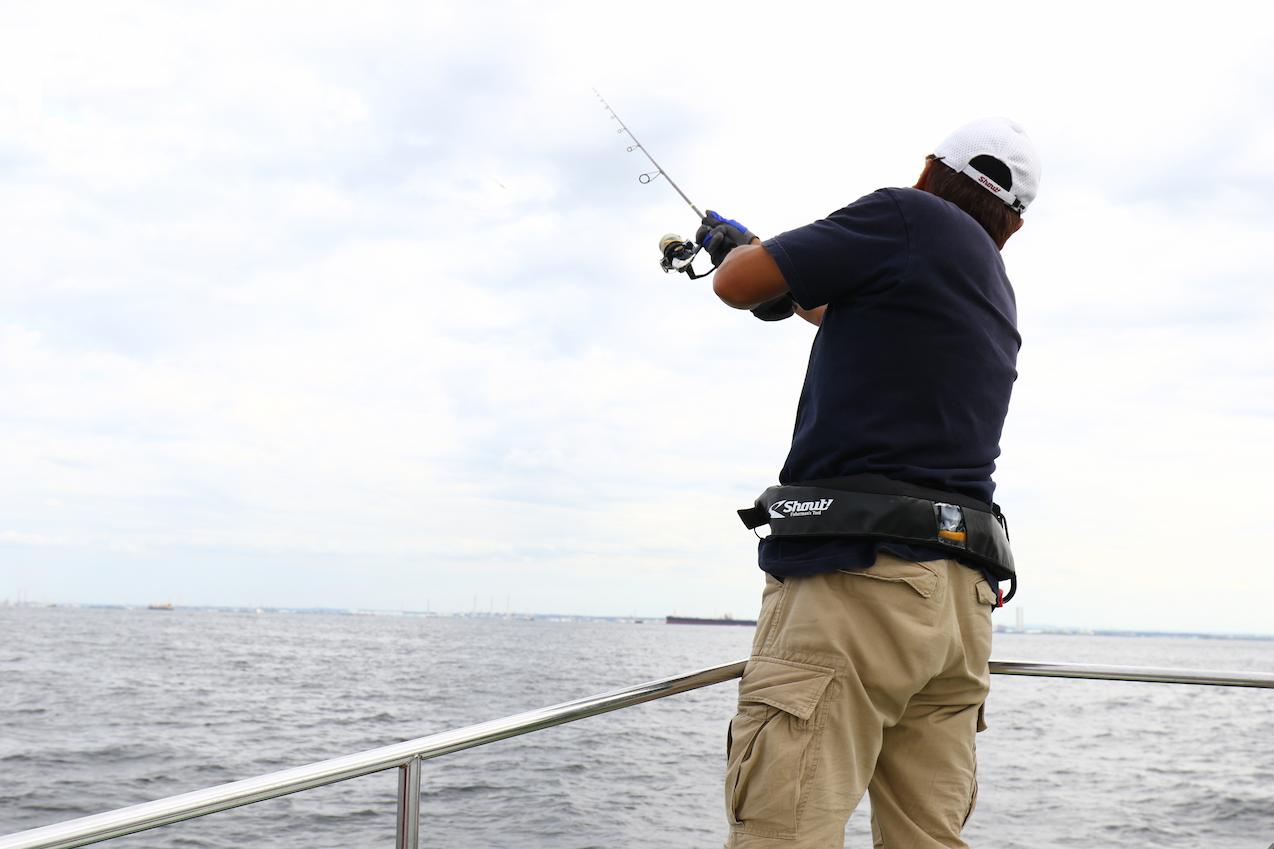
When using a light bladed jig with a certain distance to the water’s surface, such as a miyoshi, the BLJ Gunner with its high casting ability is recommended. It will give you more casting distance and allow you to search wider area. When undercasting between the bodies of passenger boats, the BLJ Booster is easier to use because the tip will hit the surface of the water if the rod is too long.
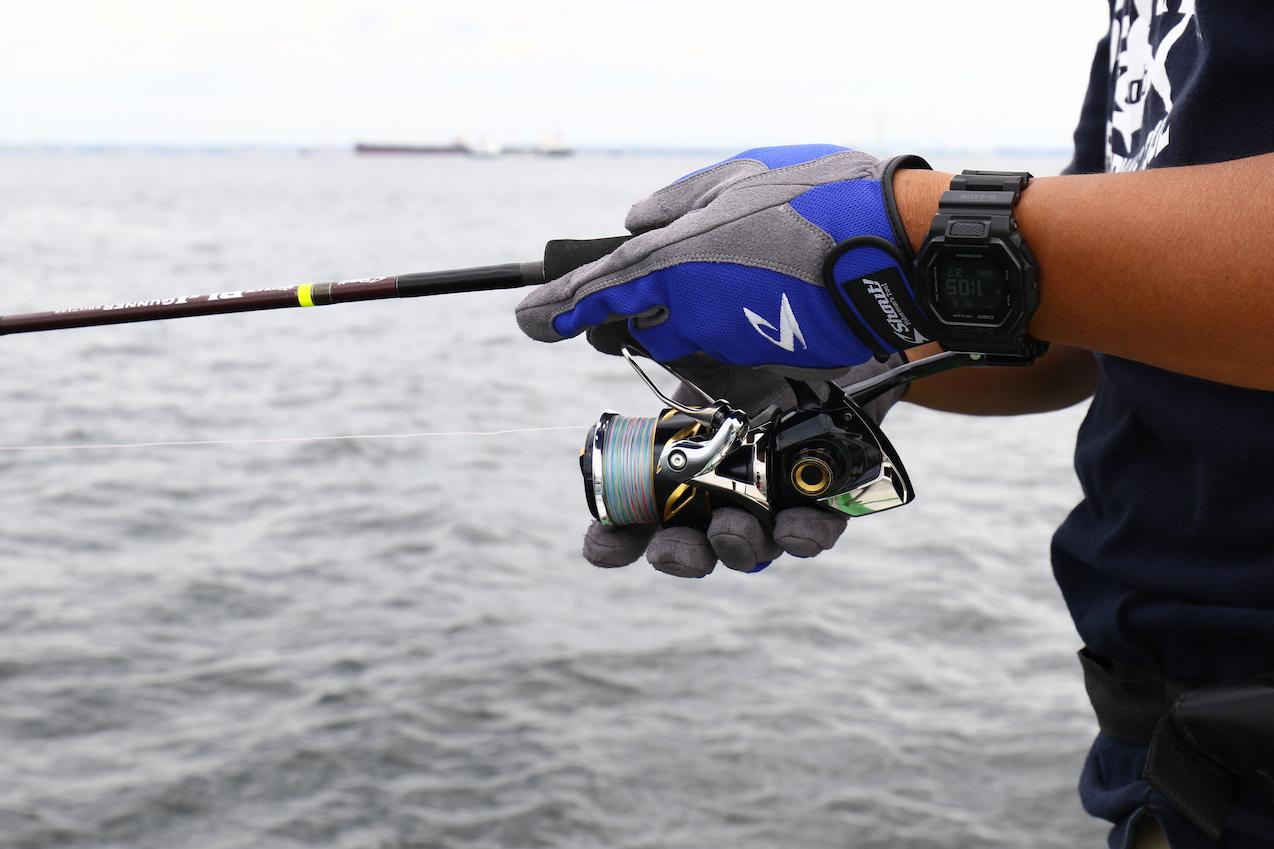
After casting and landing the jig, collect the line dander immediately and sum the line while letting the jig fall. This helps to reduce excess line wander and also allows the angler to respond immediately to a bite during the fall. It also makes it easy to know when the jig has landed on the bottom and prevents it from being caught by roots.
Prize information
BLJ Gunner https://shout-net.com/item/6389/
BLJ Booster https://shout-net.com/item/6413/
In addition to the sensitivity and ease of use for blade jigging, Mr. Ono was particular about one thing when designing these two rods. That is, the tip should not shake easily when blade jig is reeled in at high speed. When blade jigging, beginners are often so engrossed in winding the lure fast that the tip shakes violently, resulting in the jig being jerked too finely, according to Mr. Ono. Mr. Ono’s idea is to reel the jig straighter, so that Spanish mackerel will feed on the fish and line breaks are less likely to occur due to predation errors. The design of the lure is designed to hook Spanish mackerel only.
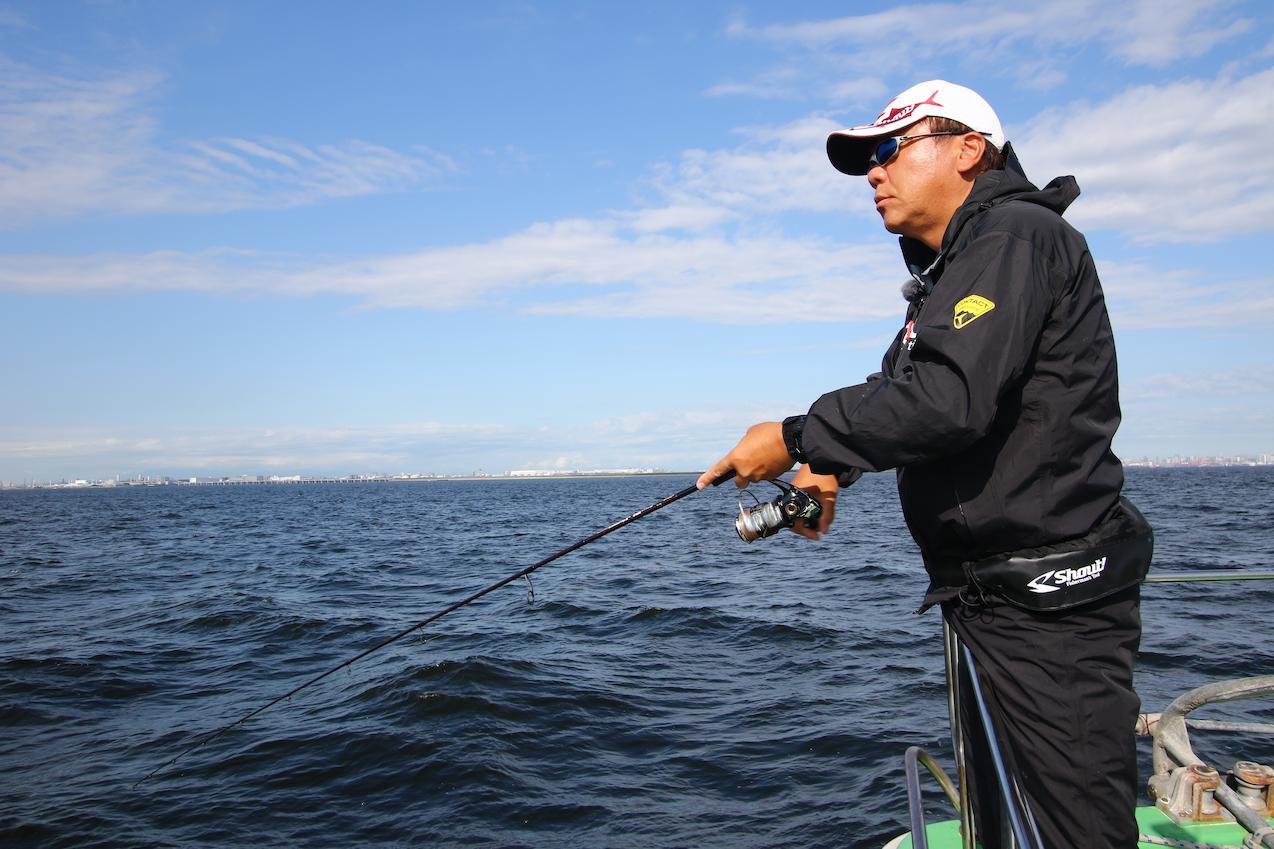
The development of both models focused on minimizing tip shake while reeling. The idea is that if the rod can be reeled without shaking, the jig can be pulled in a straighter line.
What is the gear ratio of the reel?
In this trip to the inner bay of Tokyo Bay, Mr. Ono selected Stella SW5000HG. The line was XBRAID’s SHINJI X9 No. 1.5, and the leader was FC Absorber Slim & Strong No. 6, also by XBRAID. Since fast winding is the basic method of blade jigging, I thought that the XG model reel would be better than the HG model, because it has a larger amount of wind per revolution of the handle. However, in situations where heavy jigs are used, the XG model has high winding resistance, making it difficult to continue casting and retrieving throughout the day. Rather than that fast retrieve, Ono explains that you just need to keep reeling without resting.

A higher gear ratio is better for fast reeling, but it also increases the reeling resistance. Select a reel with high performance and light winding, and a high gear type is best.
Incidentally, Mr. Ono is often asked about drag settings by fellow anglers and at exhibitions. He is concerned about the drag setting so that he does not lose the Spanish mackerel that he has just hooked. Ono said, “The drag is set weakly to prevent the fish from breaking its mouth. In the Spanish mackerel game, you don’t have to worry about the fish rubbing against the roots, so it’s okay to use a weaker setting. The standard setting is to have the drag go out with a ‘click’ when you reel in the line at high speed. If too much line is let out during the fight and it might bother other anglers, I tighten the drag just a little bit. I would definitely like to take a look at this guide.
The length of the leader is set so that when casting the blade jig, the leader does not enter the spool when the line is slightly out from the tip of the rod, and the leader is set at a length where you can hang your finger on the PE line.
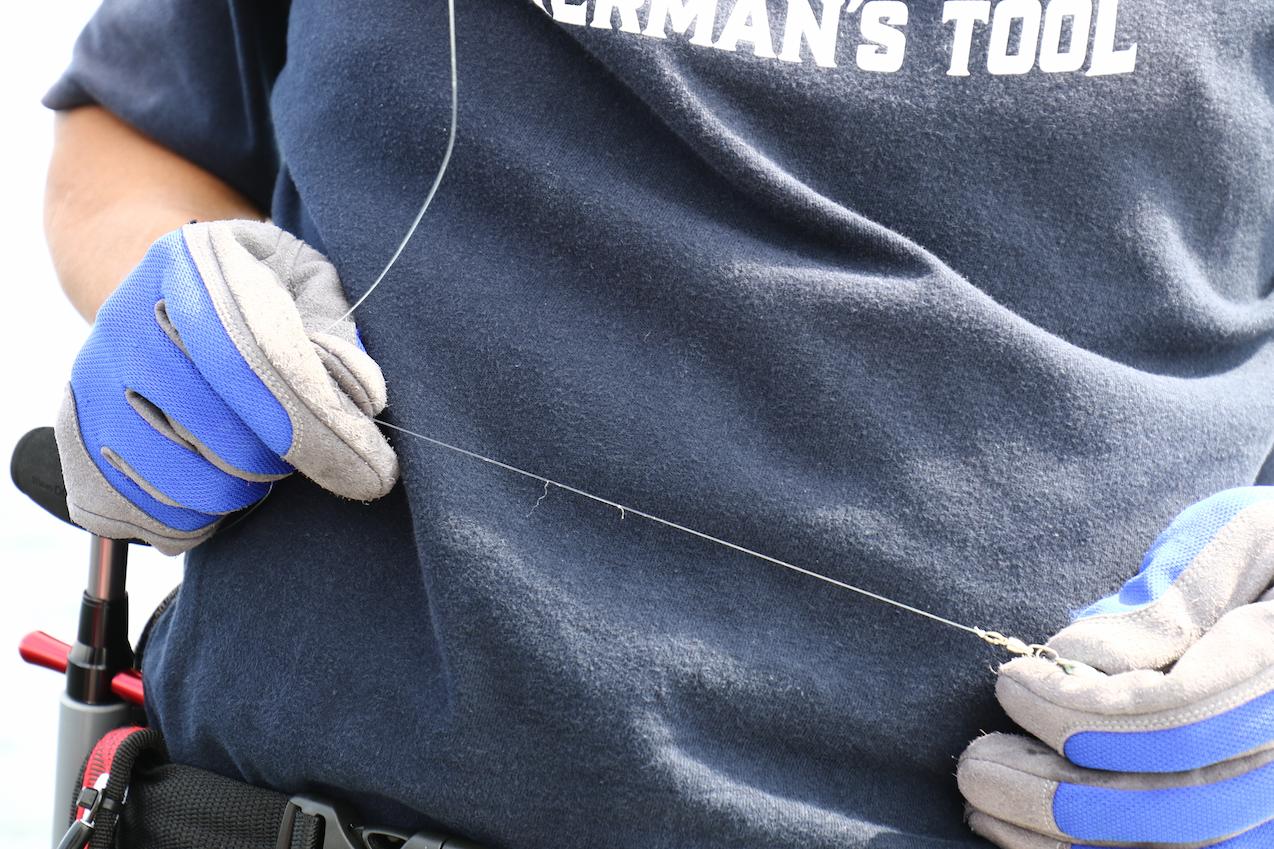
When fishing for Spanish mackerel, always check the leader when you get a bite. Even if you don’t feel a bite, the Spanish mackerel may be hurting you during the fall. You always want to check.
Prepare a wide range of jigs
Mr. Ono’s main tool for blade jigging is, of course, the blade shortell, which he developed himself. He uses different sizes of jigs (30g, 40g, 50g, 60g, 80g, 100g, and 130g) depending on the size of the bait being caught and the depth of the water to be fished. Mr. Ono first selects a similar silhouette from the lineup based on the size of the bait. He then tests to see if he can get to the bottom with it. If it is difficult to get to the bottom, he needs to increase the weight. Blade jigging allows you to explore a wider area by pulling from the bottom. Incidentally, Spanish mackerel often hit near the bottom.
Incidentally, when attacking depths of about 20 to 30 meters deep in the bays of Tokyo Bay, the main baits used are 40g and 50g. However, there are times when smaller baits are used, so 30g should be prepared. Also, if the wind is strong and the boat is being swept fast, he says it is better to have a 60g jig because it tends to float. The basic rule is to use colors that stand out in the muddy tide, but you should have a few colors available so that you can match them with the colors that are hitting around you. Tungsten braid jigs are also popular because they are small and sink quickly, but you will need to spend a certain amount of money if you want to have a large number of braid jigs. Since braid shortel is affordable, it is easier to prepare a few of them. And, more importantly, Mr. Ono has proven that even lead can be used to produce good fishing results.
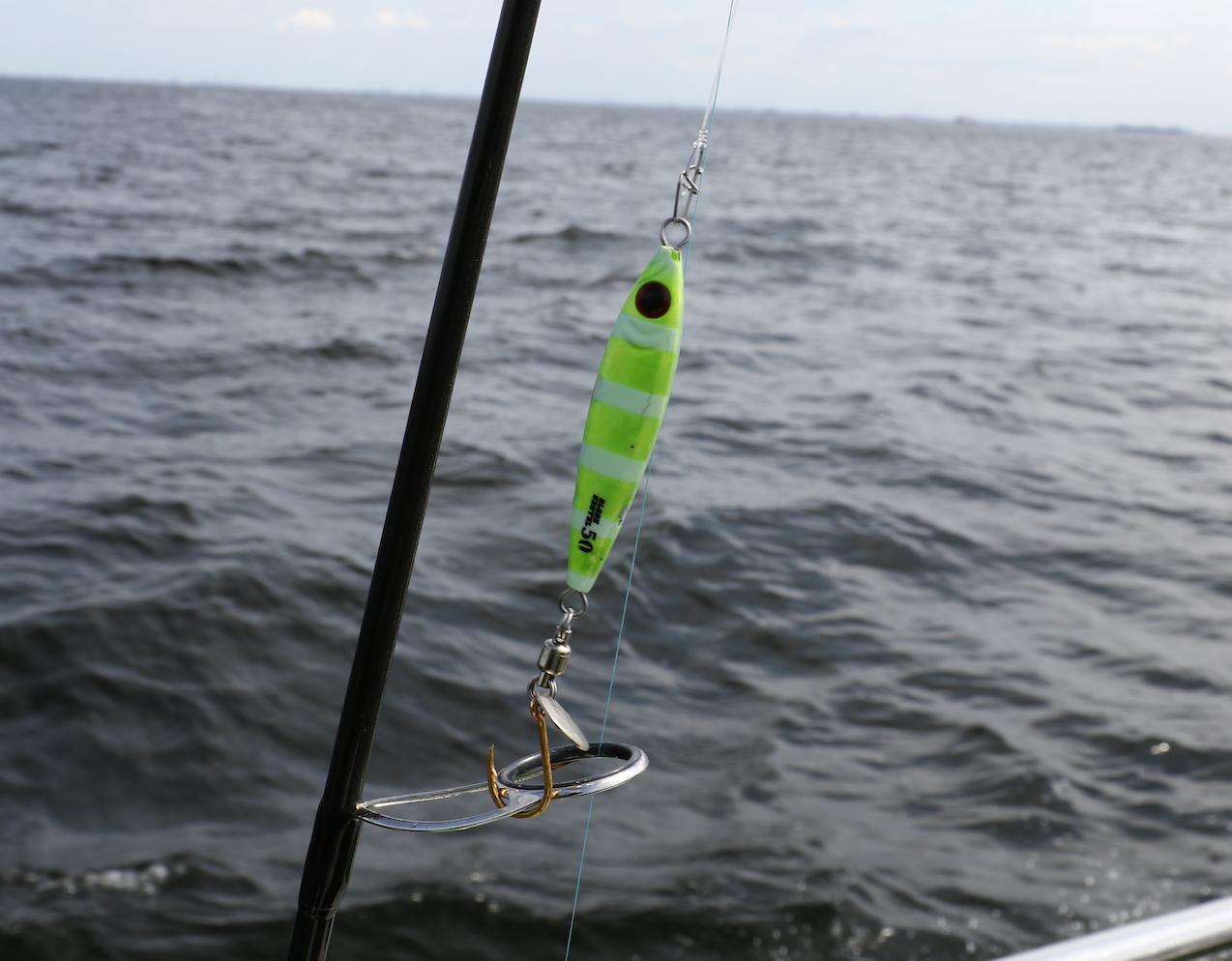
In shallow areas deep in the bay of Tokyo Bay, the standard weight is 40g or 50g, but even if the store owner says, “40g or 50g will do!” but you should also prepare a lighter one of 30g or a slightly heavier one of 60g.
Ono also recommends changing the blade to reduce the silhouette as much as possible. While the blade is also a jig silhouette and therefore a jig weight that can take the bottom, he says that shortening the blade by attaching a spare hook size S is also effective. In fact, during the interview, the angler tried different reeling speeds, jig weights, and jig colors, ultimately using smaller blades for the best results.

By reducing the blade size, the silhouette can be made smaller. You want to have not only one size, but a variety of sizes available.
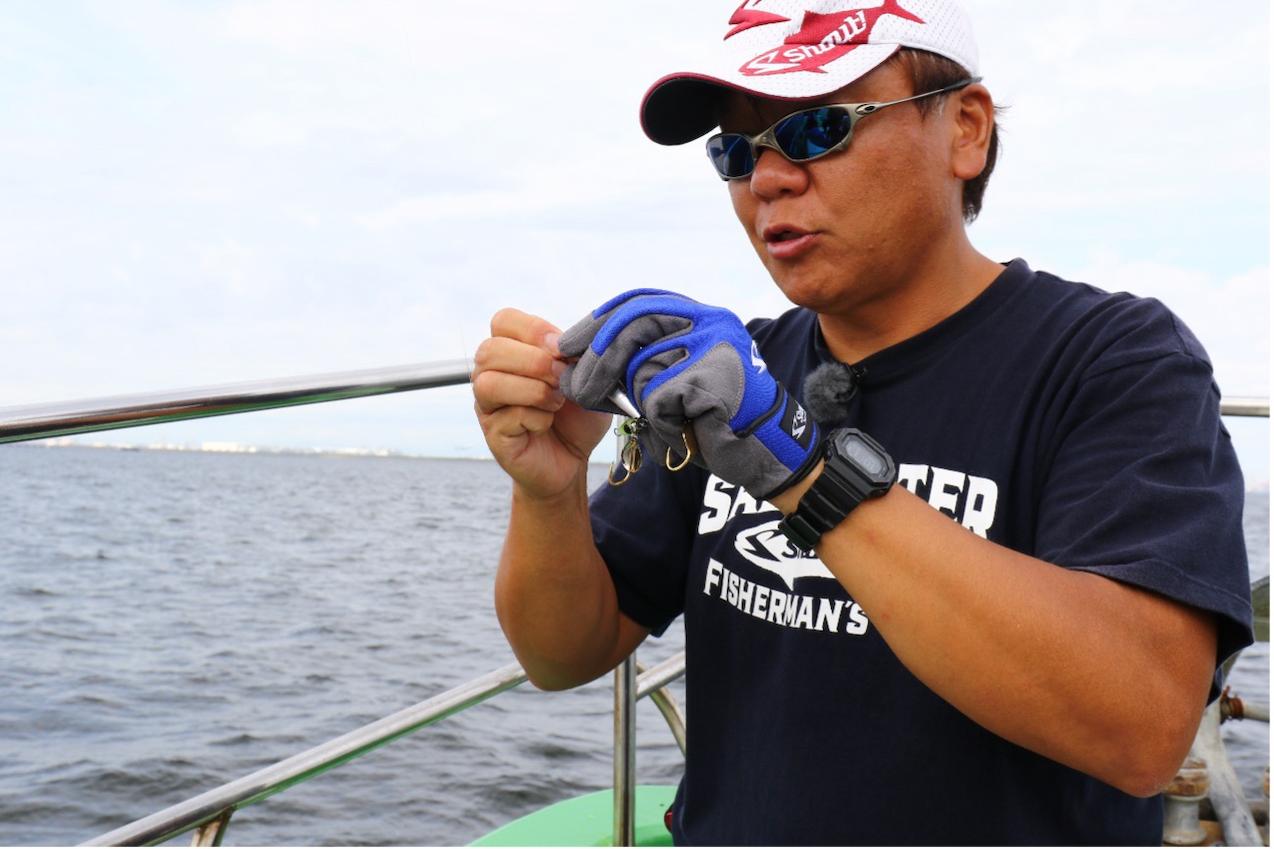
You also want to have several types of jig colors available. Change colors when the water is too muddy or clear. He says that by matching the colors of those who are catching fish, you can often get a hit. Mr. Ono also says it is a good idea to occasionally check that the metal fittings around the blades are set properly.
Product information
https://shout-net.com/item/6550/
https://shout-net.com/item/6554/
The Spanish mackerel deep in the bay of Tokyo Bay from the fall of 2023 will have a hard time keeping the water temperature down, with temperatures as low as 25°C on some days even in early November, and there will be a variation in who can and cannot catch fish on different days. However, if the sea is stirred up once by a rough storm or if the water temperature in the incoming rivers drops due to continued cold weather, the movement of sardines as bait will become more active, and the situation should change. I want to believe that the fishing season will come. And I want to prepare well for this challenge.
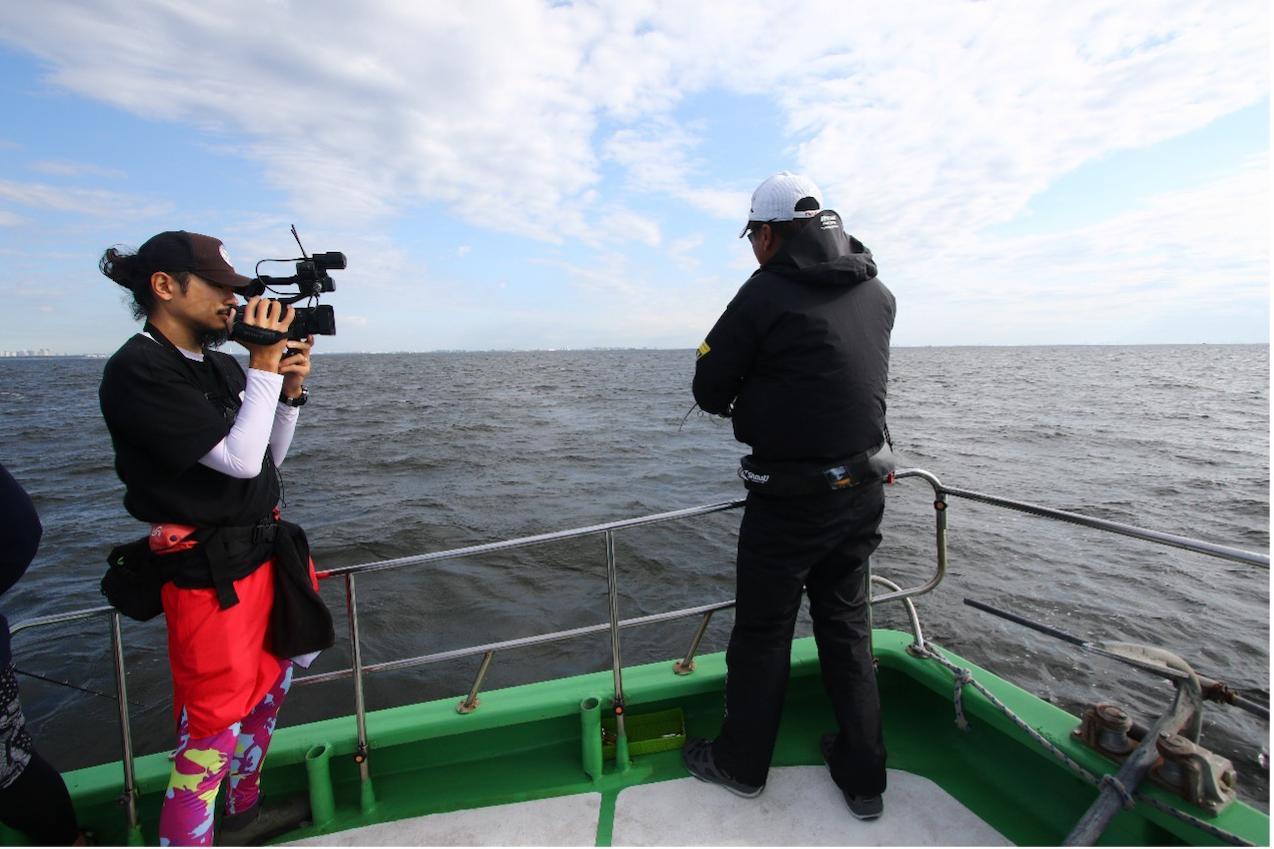
Video of actual fishing


